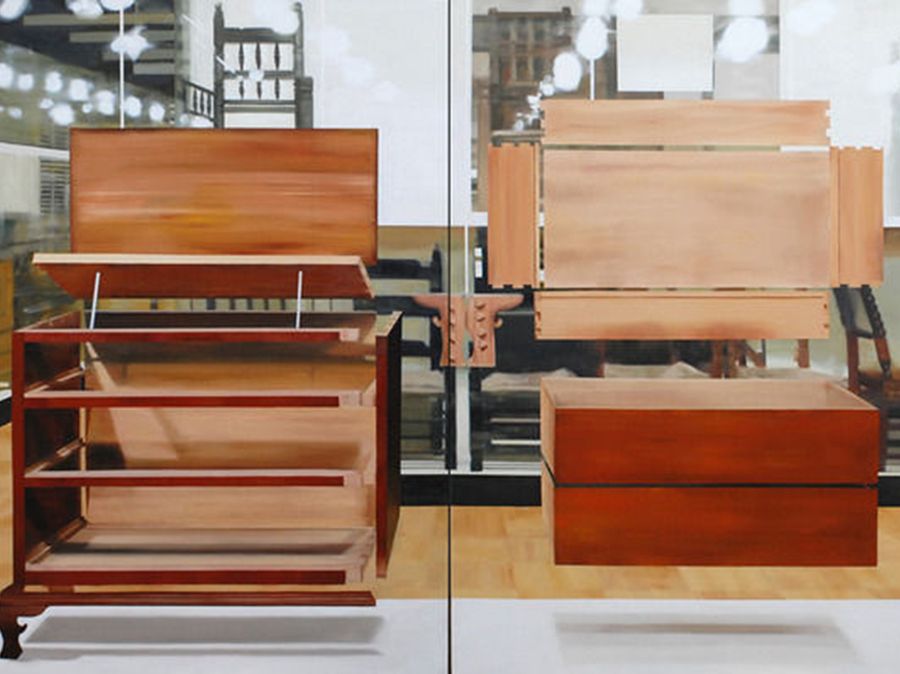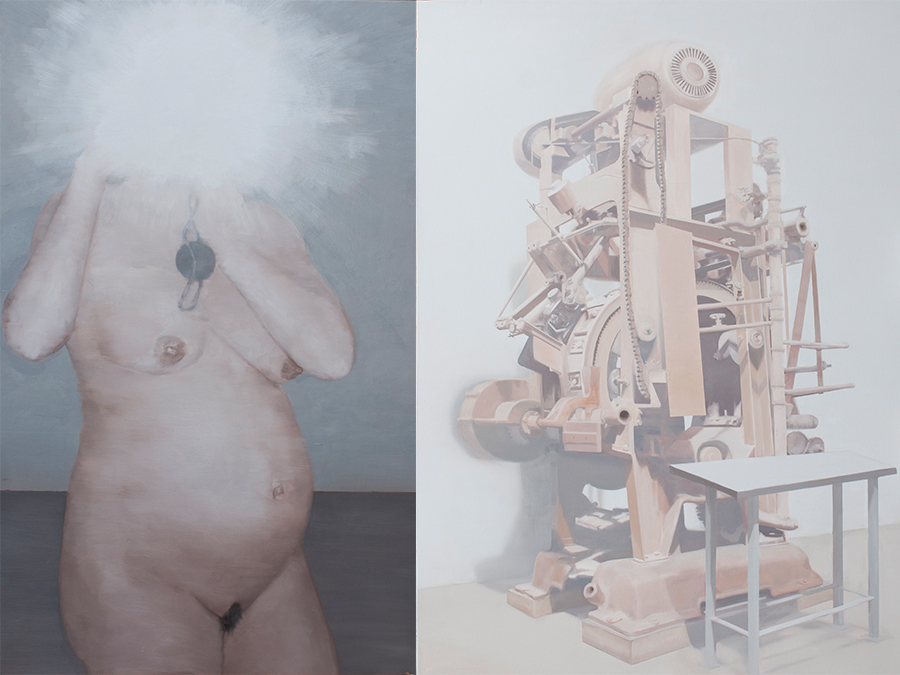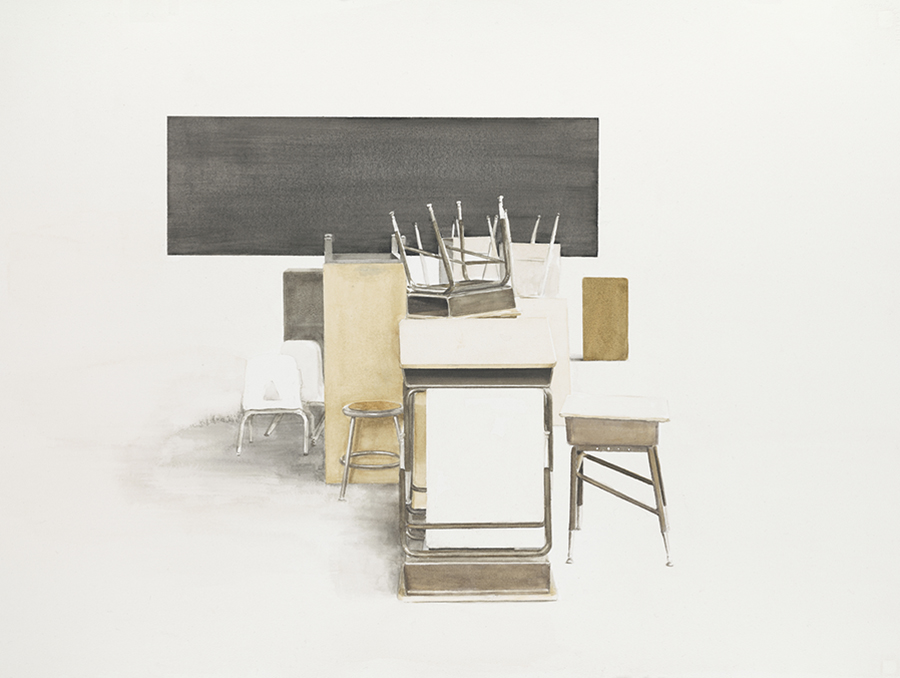While some artists seek to capture the extraordinary, Thuy-Van Vu is more concerned with the mundane — but just as revealing — objects of our lives.
The paintings in her newest show at G. Gibson Gallery showcases domestic, archaic items like stools, clunky dressers and typewriters. These objects, usually found amidst the other clutter in a person’s space, are centered in this exhibit as the main attraction.
But Vu has a knack for representing commonplace things in a way that reflects the lives of their owners.
The paintings are titled literally: “Typewriter (Museum Storage),” “American Dresser (Museum of Art),” “Storage (Former PS).”
Although the items in the series are the products of human labor, there is a conspicuous sense of human absence — save a self-portrait of Vu herself.
“Storage,” for example, pictures an empty classroom, with stacked, steel desks and a blackboard with a faint residue of erased chalk. There once were humans here, and there aren’t any longer. Likewise, in “Typewriter,” the machine is displayed untouched, without paper in its feed roller or any other sign of human use.
“Much of my work is about the transformation of objects into artifacts that are displayed to support narratives about history and culture,” Vu explains. “The process by which objects are selected to represent personal history or heritage has always interested me.”
Vu’s interest in artifacts led her to history museums to paint relics of the past. Vu’s painting “American Dresser” is of an object she found in a furniture display at the Modern Museum of Art (MoMA), while other paintings, such as “Metropolis of Tomorrow” and “Iwasaki’s Box,” are displayed locally (the latter currently encased in a glass vitrine at the Museum of History and Industry (MOHAI).

Growing up in Phoenix under the strict supervision of her parents, Vu spent much time alone in thought and observation of her surroundings, developing the patience and attentiveness that would lead her to her craft years later.
Vu’s early work included portraits of family members and appropriated images taken by journalists in Vietnam during the war. She later became more interested in how objects are used to create historical narratives. And her childhood home was full of items to study, Vu grew up seeing her parents cling to particular items.
Her parents, along with all the others who fled the Fall of Saigon in 1975, left all that they knew, filling their luggage with belongings that could most connect them to their pasts.
In a similar exhibit blocks away at The Wing Luke Museum of the Asian Pacific American Experience (The Wing), the artist duo Annie Han and Daniel Mihalyo’s “Transit in Half-Light” also meditates on the cultural and emotional weight of objects, demonstrating that when objects take on owners and their lives, they transcend the mere raw materials from which they were made. Han has dedicated parts of the exhibit to her grandmother, an immigrant from Korea, who fell into a deep grief because her belongings never made it overseas.
In the narrative of the immigrant experience, objects are never solely objects. Within objects, people embed the affirmations of their past, their resiliency, and in many cases, their miraculous continued existence.

Though Vu presents her objects with a gentle neutrality, some items from the past will never be neutral. One such example is the machine called the “Iron Chink,” a device built to gut and clean salmon for canning, ultimately replacing Chinese fish plant workers. When you are confronted with Vu’s own “Iron Chink” — its unwieldiness and brashness — you are also confronted with the brashness of a time that rationalized such an invention.
The most standout piece in Thuy-Van’s show is her self-portrait, “Twenty Seven Weeks.” As the only painting that features human life, not merely its vestiges, the painting portrays Vu naked with an extended belly, colored in the same soft, fleshy salmon that is used in the piece adjacent to it, the “Iron Chink.” The juxtaposition serves as a reminder that the change of objects and ideas is as continual and constant as their rebirth.
While the “Iron Chink” embarrasses us as a vestige of our brutish history, it also positions us to see the machine with enough distance to see it for all of its obvious faults. It gives us a place from which we can start all over.
See Thuy-Van Vu’s “New Paintings + Works on Paper” this week at G. Gibson Gallery in Seattle’s Pioneer Square:
- Artist Reception: Thursday, April 3 from 6 p.m. to 8 p.m.
- Artist Talk: Saturday, April 5 at 2 p.m.
This story was originally published in the International Examiner.



